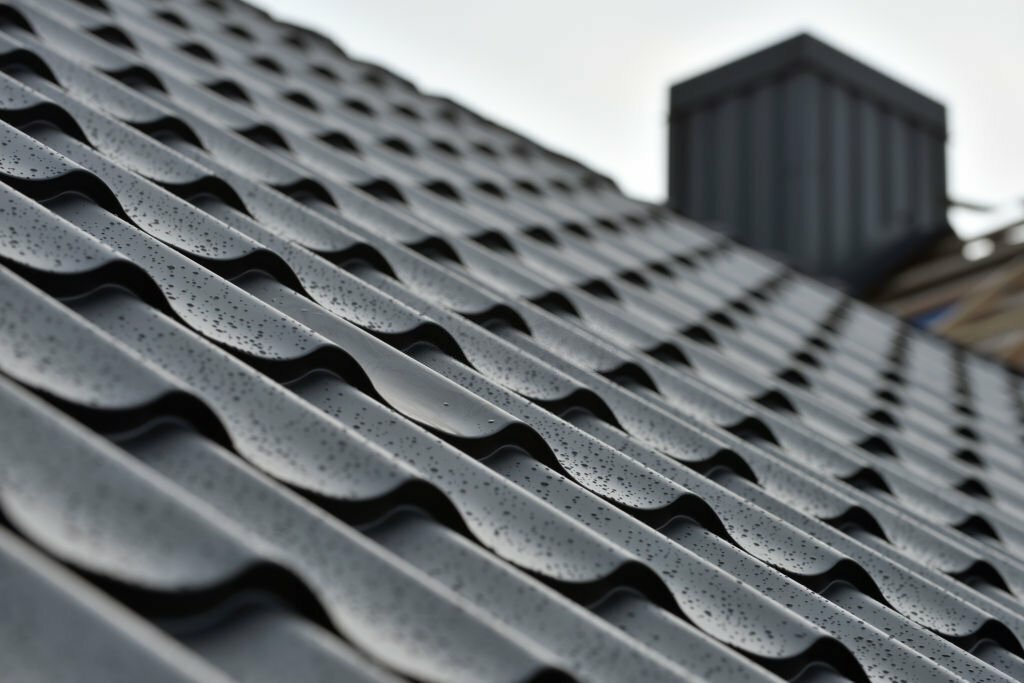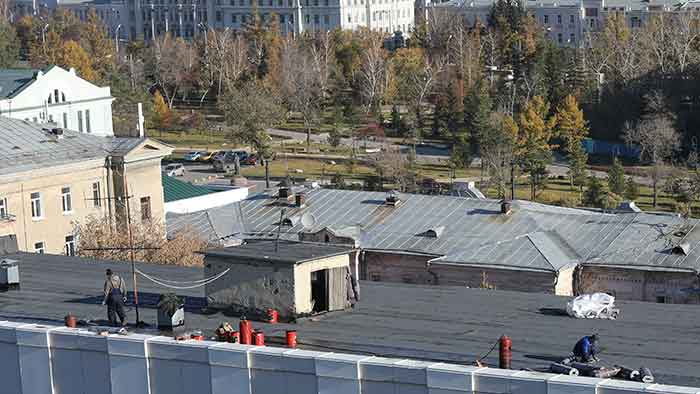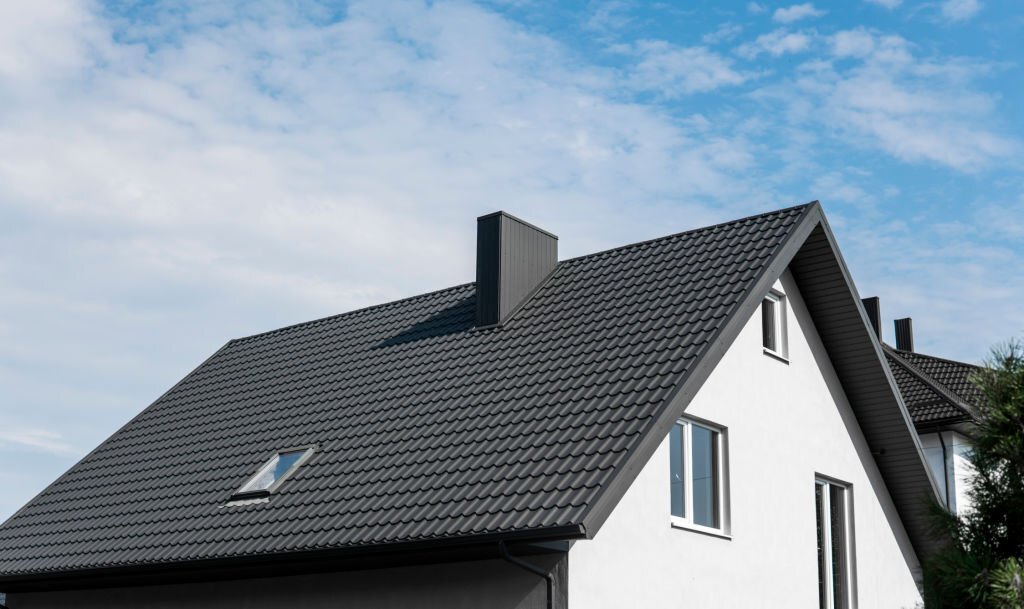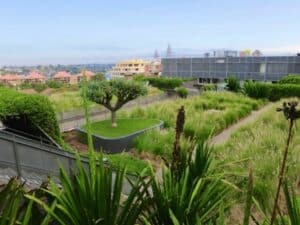 A house with a green roof uses less energy, retains heat and cool air, and even enjoys a better property valuation. Understandably, they are a huge undertaking. So, is it worth your time and money from the investment and environmental perspectives? Keep reading to find out!
A house with a green roof uses less energy, retains heat and cool air, and even enjoys a better property valuation. Understandably, they are a huge undertaking. So, is it worth your time and money from the investment and environmental perspectives? Keep reading to find out!
What is a Green Roof
A green roof is a roof or part of it that is covered with vegetation. Green roofs usually use plants, which grow on a layer of soil that is protected from precipitation by a waterproof layer. These plants absorb carbon dioxide from the atmosphere, so the roof itself becomes a makeshift forest.
While they do require more specialized maintenance than other kinds of roofs, they are useful in regulating the temperature inside the house, reducing energy consumption, reducing erosion, improving microclimate, and managing urban heat island effects, among several other benefits.
Green roofs also contribute significantly to the biodiversity of the environment and make urban areas an overall better place to reside.
Green Roof Benefits for Marylanders
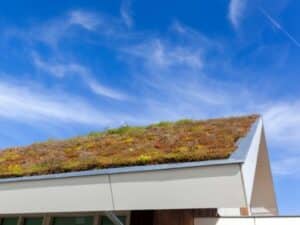 To say ‘Maryland has an unreliable climate’ is a colossal understatement. Maryland is getting hotter by the year and the pollution isn’t helping. Even for its size, it has incredibly varying weather conditions across the state.
To say ‘Maryland has an unreliable climate’ is a colossal understatement. Maryland is getting hotter by the year and the pollution isn’t helping. Even for its size, it has incredibly varying weather conditions across the state.
To curb the problem, green roofs should be considered as a much-needed solution to all problems related to the environment and energy consumption. Here are some green roof benefits that make them worth the investment.
Energy Efficiency is a Benefit of Green Roof Installations
Green roofs provide insulation during the summer and winter, reducing heating and cooling needs for homes or buildings. It reduces cooling loads by reflecting sunlight and channeling solar radiation, thus lowering moisture levels in the summer when it is hot and muggy. This helps reduce your need for air conditioning in summer.
Alternatively, a green roof also lowers the monthly drain on household energy bills by providing insulation for the house during colder months to keep your building warmer. It can also help better manage moisture levels in your building by reducing the amount of water vapor that passes through the roof. All in all, a well-maintained green roof can really help reduce your building’s carbon footprint.
Prevention of Stormwater Runoff
Stormwater runoff is a huge environmental issue in the United States. Impervious roofing materials, such as asphalt, cause significant amounts of stormwater to run off and overwhelm storm drains and waterways. Not only does this cause flooding and erosion but it also results in high chemical loads.
A living roof can help with stormwater management. It absorbs much of the stormwater to provide for the plantation and other biodiversities before releasing whatever little is left into the gutter system.
Green Roofs Provide Improved Air Quality
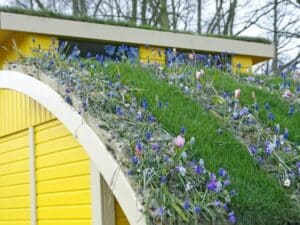 The benefits of a green roof aren’t just limited to looks and aesthetics; it also benefits you, your family, and the environment.
The benefits of a green roof aren’t just limited to looks and aesthetics; it also benefits you, your family, and the environment.
When plants grow on roofs, they improve the air quality. First, they absorb the CO2 from the polluted air, and then, they release fresh oxygen back into the atmosphere. Because plants extract CO2 from the atmosphere, they reduce global warming, as well.
This actually helps reduce air pollution, which is a necessity in cities, where cars burn lots of fuel – making green roofs the future of sustainability.
Now, plants are already known for reducing carbon emissions, and that’s why they are incorporated in city planning to improve the quality of the residents’ lives. So, imagine the kind of health benefits you stand to enjoy from a green roof installation right atop your building.
Promotion of Biodiversity
A green roof provides shelter, food, and nesting for urban biodiversity. The plants provide pollen and nectar, which attract insects, birds, and other animal life to the green roof. The entire space also serves as habitat and nursery areas for birds, butterflies, bees, and other insects and small animals.
By providing habitat for a variety of species, green roofs help to sustain biodiversity in urban habitats – something that’s lacking in our concrete Maryland. The concept is very much like that of a pond ecosystem, where you add a few elements and nature gives you a full-fledged self-sufficient ecosystem with lifelong benefits.
Green Roofs Provide Community Beautification
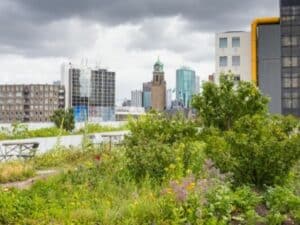 Living in a big city can be stressful but did you know adding greenery can actually boost the residents’ mood and uplift them emotionally?
Living in a big city can be stressful but did you know adding greenery can actually boost the residents’ mood and uplift them emotionally?
But the problem with adding greenery to existing cities is that it requires years of planning. There are too many moving pieces and getting permits is a tedious process. That’s why green roofs are such an ideal solution for the modern world.
Green roofs are roofs covered with grass, shrubs, flowers, trees, and boast a small animal ecosystem of their own. They reduce the amount of space taken up by the concrete and make the buildings more appealing to all our senses.
More importantly, they don’t require a piece from our land, so anybody anywhere can start building their own green roof in Maryland without worrying about space issues. This is especially beneficial for commercial roofing.
Maryland Green Roofs Provide Weather Protection
Green roofs are usually planted with sedum, moss, or grasses. Besides providing insulation and acting as a temperature buffer, green roofs offer protection against harsh weather conditions, well.
For instance, they reduce ice formation caused by snow residue on the roof, which is one of the major causes of structural damage in Maryland.
Being self-sufficient, green roofs also harvest rainwater and filter the debris before releasing it into the draining system; thereby reducing the chance of flooding. They also keep your house from freezing in winter and boiling in summer as well as prevent damage caused by the relentless freeze-thaw cycle.
And Also… Improved Fire Resistance
The green roofs can capture and hold about one inch of rainwater in a 3-4 inch layer of soil. They absorb the moisture from the atmosphere and the irrigation system and this moisture improves the fire resistance of your building.
In case of a fire, it will take much longer for the moisture to leave the green roof thus saving your building from being burned down.

